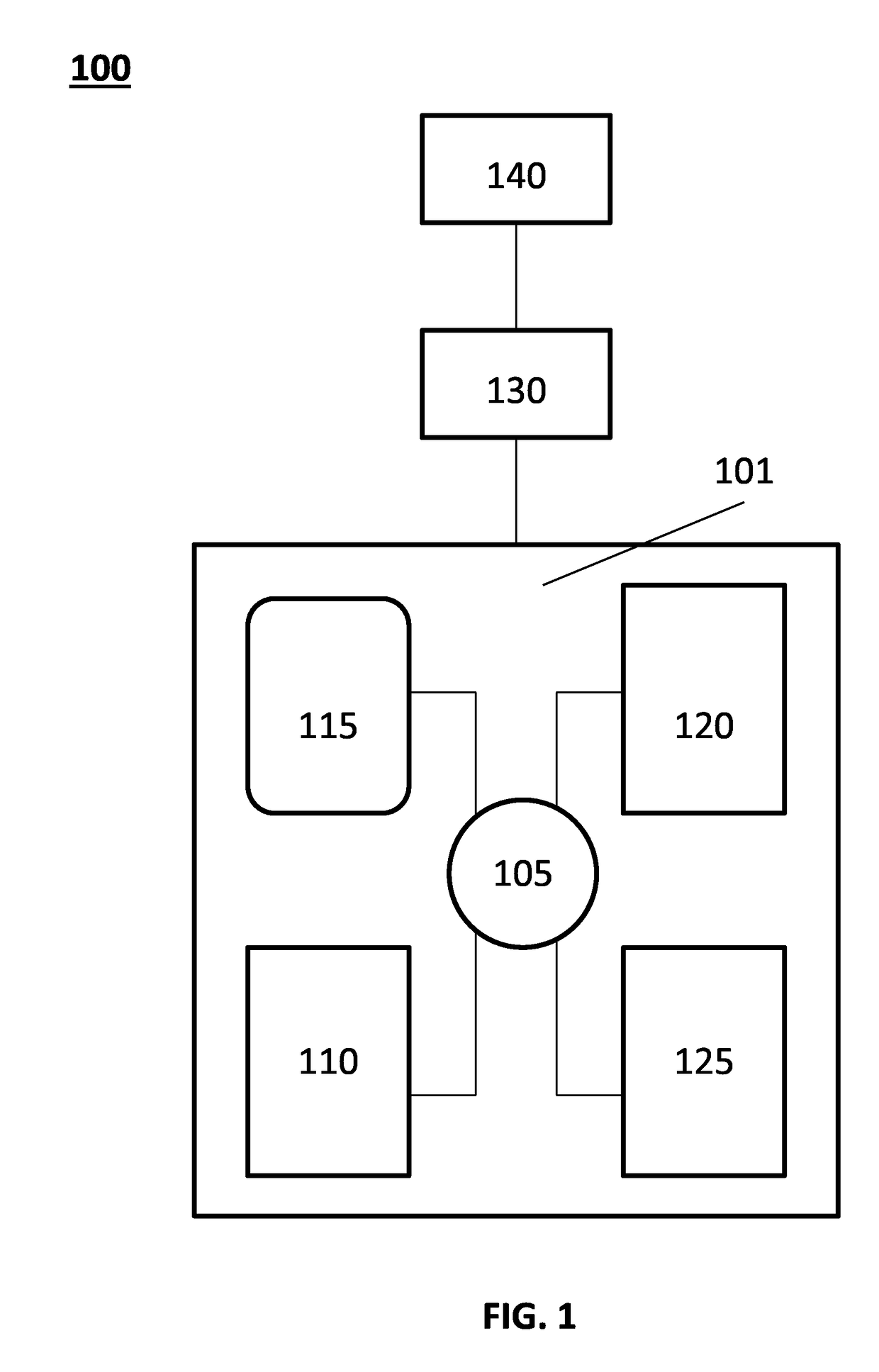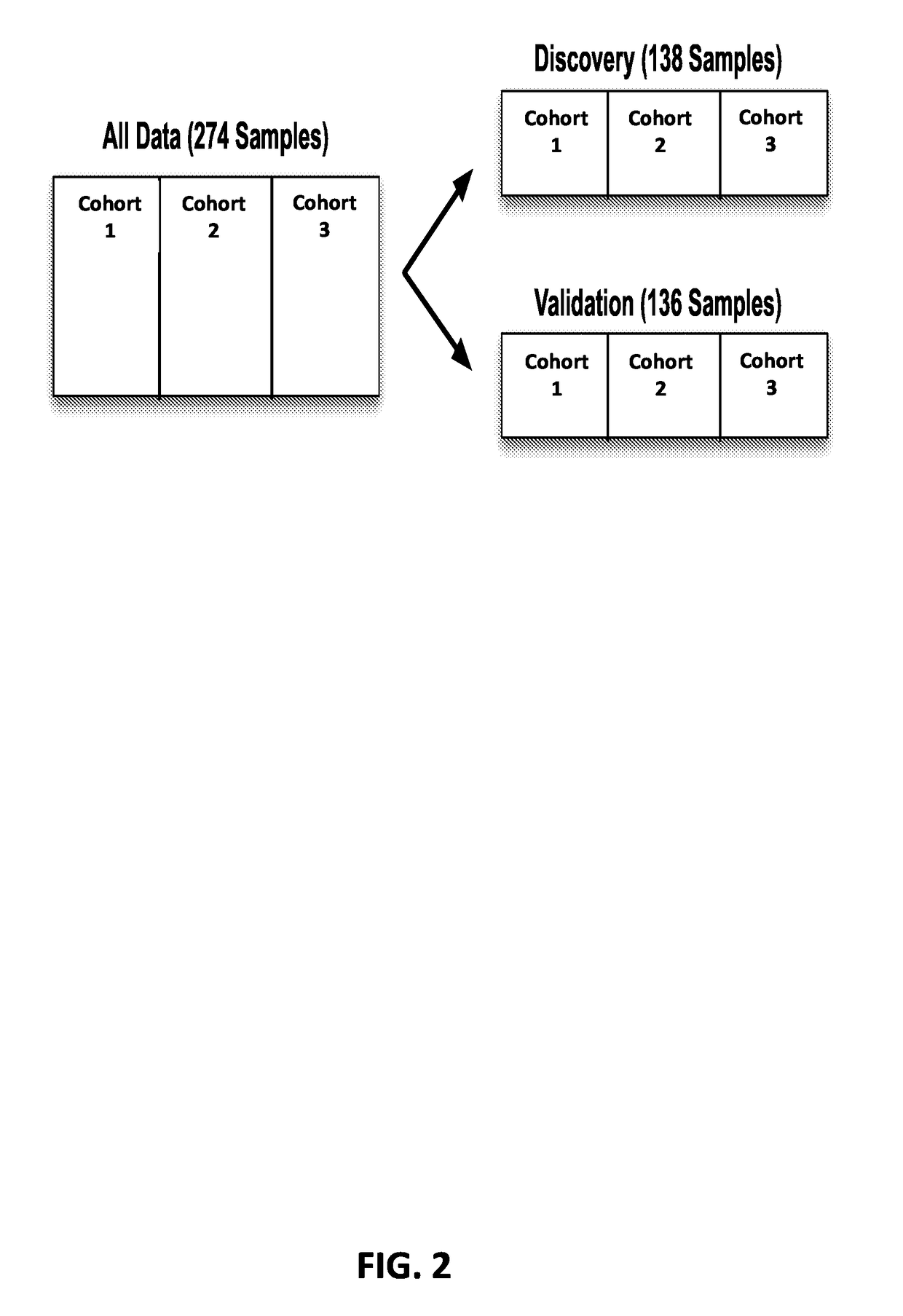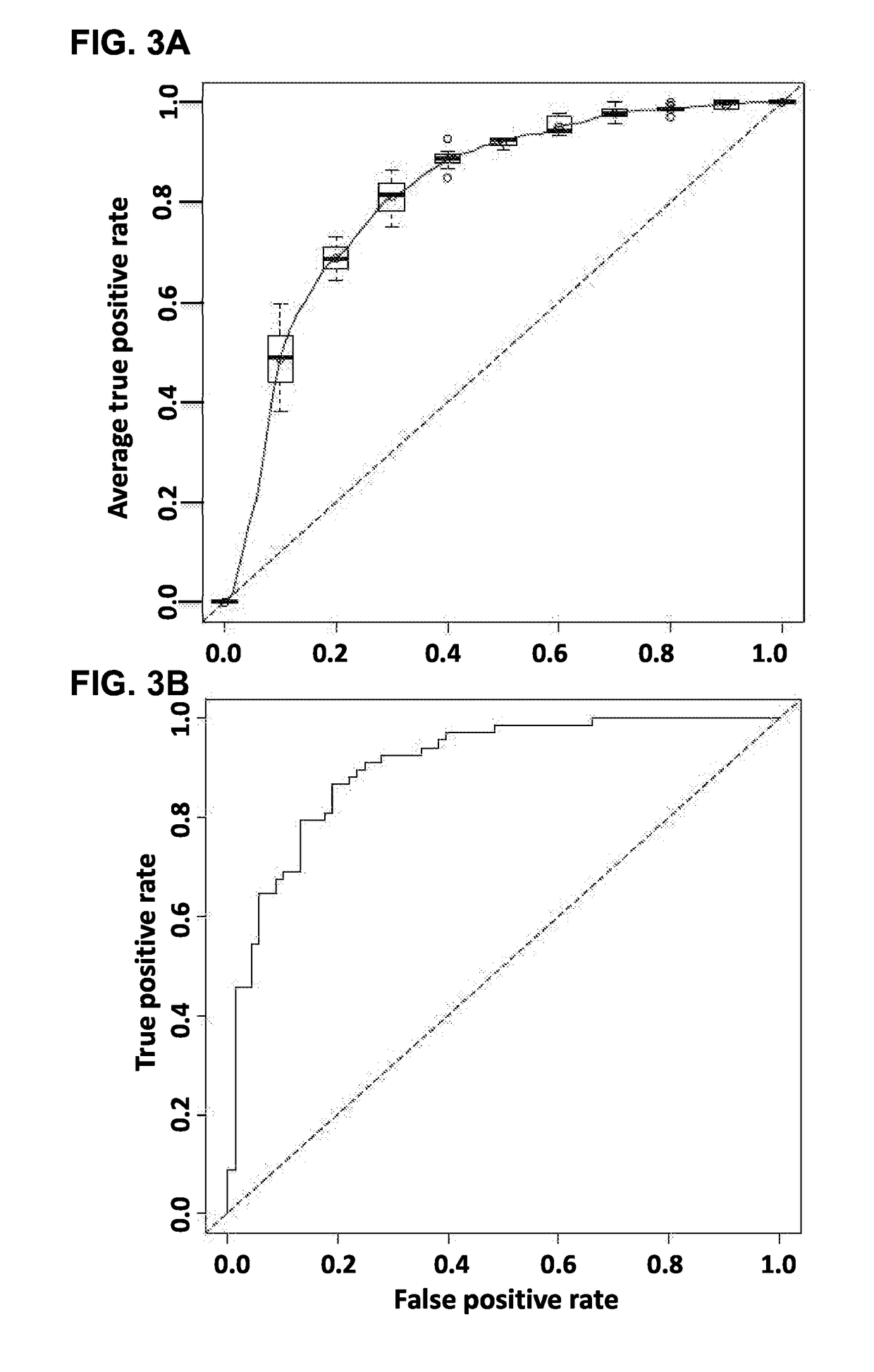Protein biomarker profiles for detecting colorectal tumors
a colorectal tumor and biomarker technology, applied in the field of protein biomarker profiles for detecting colorectal tumors, can solve the problems of low acceptance from the population and expose the subject to the risk of infection
- Summary
- Abstract
- Description
- Claims
- Application Information
AI Technical Summary
Benefits of technology
Problems solved by technology
Method used
Image
Examples
example 1
and Validation of Protein Biomarker Panels for Diagnosis of CRC
[0214]Study Design and Patient Sample Collection
[0215]Blood plasma samples from 137 procedure-confirmed CRC and 137 healthy control patients were used in the study. These samples were collected from 3 independent cohorts, and control and disease samples were balanced for age and gender. Approximately half of the control and disease samples (138) were put into a training (for example, discovery) set used for all classifier model development, and the remaining samples (136) were put into a hold-out validation set, which was only used to test the models developed in the discovery set. The discovery and validation sets are depicted in FIG. 2 and in Table 3, below.
TABLE 3Discovery and training sets for developing proteinbiomarker panels for CRC diagnosis.ControlCRC DiseaseDiscovery SetCohort 12424Cohort 22424Cohort 32121Total6969Validation SetCohort 12424Cohort 22424Cohort 32020Total6868
MRM Assay Development
[0216]Initially, 1...
example 2
fication Analysis by Sample Set
[0238]Experiments were conducted to determine whether misclassifications of CRC or no CRC are influenced by the sample set used. Sample sets from cohort 1, cohort 2, and cohort 3, respectively were assessed using Model 6 (measurement of CO9 and GELS). Validation ROC curves from this experiments are shown in FIG. 7A and the point of maximum accuracy (82%) is indicated by the circle. Using the point of maximum accuracy as a diagnosis decision threshold, misclassification of the individual cohort sample sets was assessed. FIG. 7B demonstrates similar misclassification prevalence in all the sample sets with a chi-sq p-value of 0.11, demonstrating that the misclassification of samples is not biased by sample set.
example 3
and Validation of Protein Biomarker Panels Predictive of Advanced Colorectal Adenoma
[0239]In order to correlate plasma protein profiles with patient colonoscopy outcomes, blood samples were collected from patients presenting for colonoscopies on the day of their procedures. Inclusion criteria required that the patient be equal to or greater than 18 years of age and be willing and able to sign an informed consent. This was an “all comers” study in which patients could be undergoing the procedure as a recommended, routine screen, as a precaution due to prior personal or family history, or as a follow up to personal health symptoms.
[0240]After the routine preparation for colonoscopy that included overnight fasting, liquid-type constraints, and bowel prep to remove fecal matter, a blood sample was drawn into a plasma collection device that included EDTA as an anti-coagulant. The blood sample was mixed, centrifuged to separate plasma as per the manufacturer's instructions, and the separa...
PUM
 Login to View More
Login to View More Abstract
Description
Claims
Application Information
 Login to View More
Login to View More - R&D
- Intellectual Property
- Life Sciences
- Materials
- Tech Scout
- Unparalleled Data Quality
- Higher Quality Content
- 60% Fewer Hallucinations
Browse by: Latest US Patents, China's latest patents, Technical Efficacy Thesaurus, Application Domain, Technology Topic, Popular Technical Reports.
© 2025 PatSnap. All rights reserved.Legal|Privacy policy|Modern Slavery Act Transparency Statement|Sitemap|About US| Contact US: help@patsnap.com



